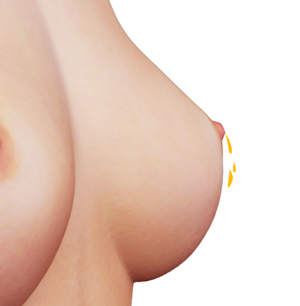Abnormal Nipple Discharge

Alternative names
Discharge from breasts; Milk secretions; Lactation – abnormal; Witches milk; Galactorrhea
Definition
This symptom involves abnormal discharge from the nipple(s)
Considerations
The likelihood of nipple discharge increases with age and number of pregnancies.
While a milky nipple discharge is rare in men and in women who have never been pregnant, it does occur. When it does, it is likely to be caused by some underlying disease, particularly when accompanied by other changes in the breast(s).
It is relatively common in women who have had at least one pregnancy. A thin yellowish or milky discharge (colostrum) is normal in the final weeks of pregnancy.
The nature of the discharge can range in color, consistency, composition, and may occur on one side or both sides.
“Witch’s milk” is a term used to describe nipple discharge in a newborn. The discharge is a temporary response to the increased levels of maternal hormones. Witch’s milk should disappear within 2 weeks as hormone levels dissipate in the newborn.
Other nipple discharges can be bloody or purulent (containing pus), depending on the cause.
Common Causes
- breast abscess (most common in lactating women)
- trauma can cause discharge from both breasts
- drugs such as cimetidine, methyldopa, metoclopramide, oral contraceptives, phenothiazines, reserpine, tricyclic antidepressants, or verapamil
- prolactinoma (prolactin-secreting tumor in the brain)
- intraductal papilloma (a small noncancerous growth in the duct of the breast)
- ductal ectasia
Home Care
Follow provider-prescribed therapy.
Call your health care provider if
If there is any abnormal nipple discharge, call your health care provider.
What to expect at your health care provider’s office
The medical history will be obtained and a physical examination performed.
Medical history questions documenting a nipple discharge in detail may include:
- Are you pregnant?
- Are you breast-feeding?
- What type of drainage is there?
- Does it look like milk (even though you are not breast-feeding)?
- Does it look bloody?
- Does it look like pus?
- Is the drainage from both breasts?
- How much drainage is there?
- Enough to stain the lining of the bra?
- Enough to soak through the bra?
- Does the discharge occur spontaneously, or only when expressed?
- Do you perform breast self-examination? How often?
- What medications do you take?
- What other symptoms are also present? Especially, is there:
- fever
- a breast lump
- breast pain
- headaches or change in vision
The physical examination will include examination of the breasts for lumps or other abnormality.
Diagnostic tests that may be performed include:
- breast biopsy (if lump is found)
- cytologic study of discharge (a study of the cells in the discharge)
- head CT scan to look for pituitary tumor
- mammography
- serum prolactin
- transillumination (a light is placed against the breast to help determine if there is an accumulation of fluid in the tissue)
- ultrasonography (ultrasound of the breast)





